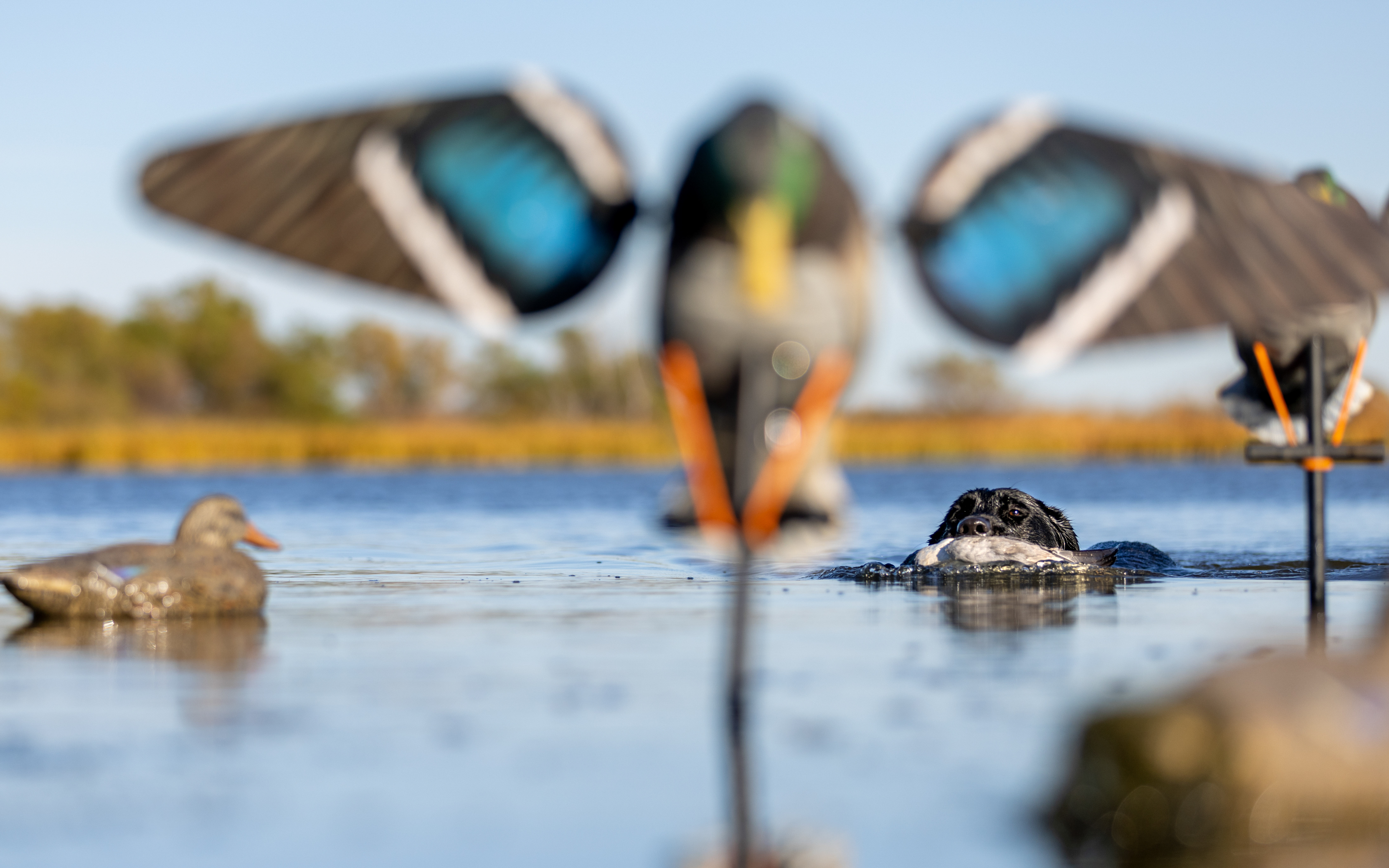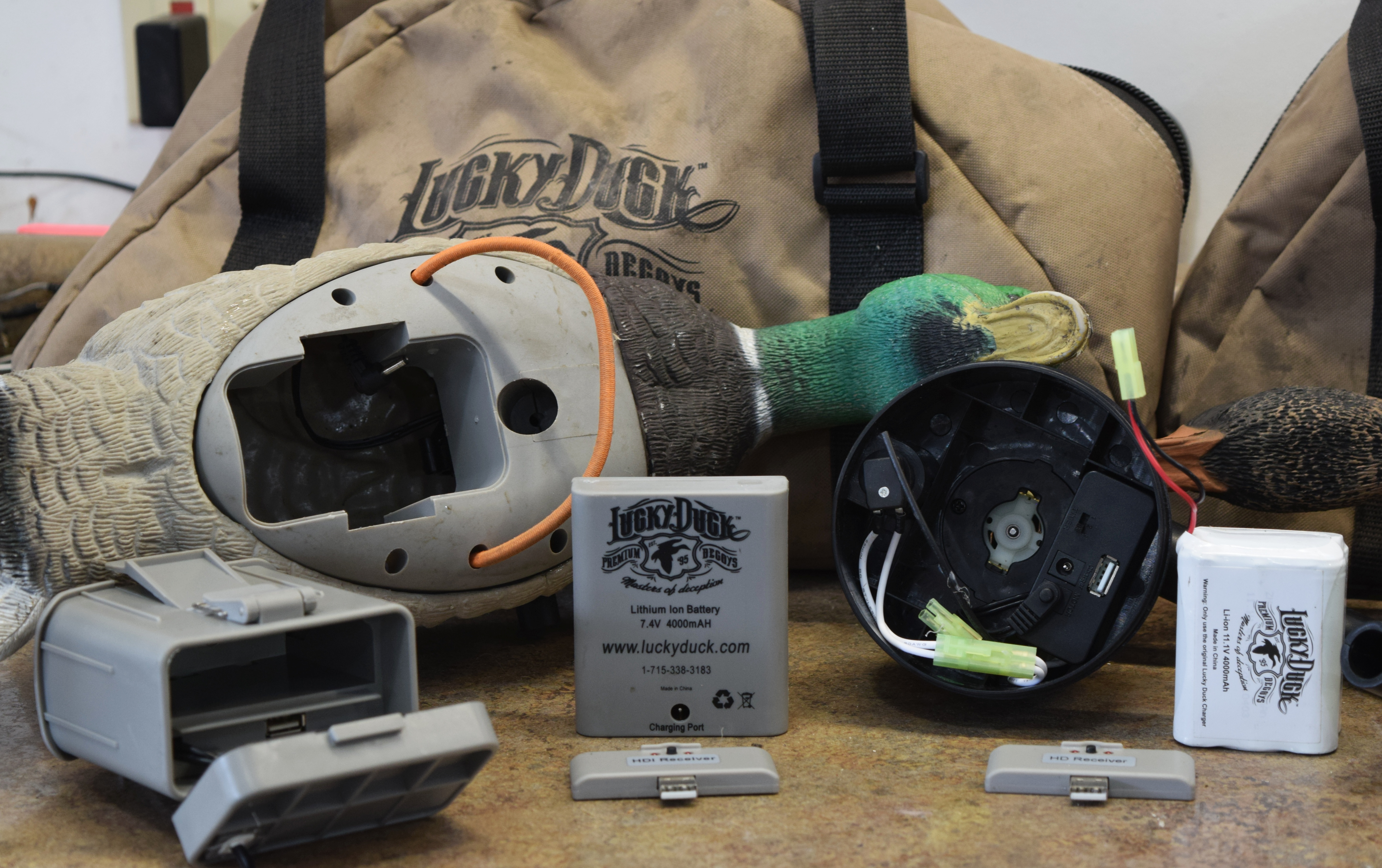After Season Electronic Decoy Care
Posted by Lucky Duck Team on Feb 23rd 2022

As we start to come to the end of many waterfowl seasons, it becomes time to store our electronic decoys. With proper storage you will limit many issues in 8-10 months when you are ready to check them for season. We will talk about making sure the decoys get dry, clean, and how to store your batteries to prevent early failures.
When season closes here and after many weekends of hunting even during the season, I like to take the battery case out and leave open with a fan blowing over the decoys. Getting the air movement is key to get any moisture that is inside dry. Even if you did not hunt over water, rain, or snow it is important to dry them out. Condensation is created from warm air in the garage, house, or truck and then set in the cold for operation. While these are drying out, it is a suitable time to clean the dirt and grime from them. Warm, soapy water to clean up the wing, especially the white side. The white is the flash and if left dirty it can take some of that away or even stain if left on. Avoid any chemicals, just warm water and a little dish soap should make them look good in a hurry. Do not forget to include cleaning up the stakes. Leaving the dirt and grime on them can cause rust or corrosion over time as well.

Most important care is the battery. Each style requires a slight different maintenance for storage and after season care. Batteries have seals in them and just like a food can, they will go bad if not stored and cared for properly.
Lead acid battery is the black square (6- or 12-volt) we have in many of our decoys. The best temperature to store these is around 60 degrees Fahrenheit with over 70% charge. When stored at room temperature on average you can lose 3% of charge per month. If you store outdoors, in a storage shed or trailer in the hot and humid summer months, you can lose much more percentage. If stored above 100 degrees Fahrenheit for 1 month it will be too low to run your decoy most likely. So over 9 months of sitting in different weather conditions will take a toll on them. Recharging these batteries often is key, keep them fully charged. Recharge should be done every 30-60 days (about 2 months) to ensure they keep a charge, as well as unplugged from the product.

Lithium batteries are becoming more popular as they tend to be smaller, lighter, and last longer. The care on lithium is a bit more important as it is a more expensive battery and in general takes more maintenance to keep them lasting. Lithium batteries will need to be unplugged and removed from the product and the battery holder. The contacts should not be in contact with anything that could cause a drain on them. Lithium is recommended to be stored at about 50% charge, long-term storage at 0% will damage the cells. As well as a full charge on lithium is not recommended. With these I like to fully charge my battery and set the decoy up to run with no wings on it for about 4 hours. From here unplug the battery and set in storage for about 2 months. Take out and give a little charge, approx. 1 hour, just to keep a little cycle on it. If your time allows, put in the decoy and check the function. Or fully charge and run a few hours again.
Overview of general battery storage and maintenance. An acid-based battery should be stored at full charge. Lithium based battery should be stored at half charge, or 40% charge. This will help keep them from using capacity over time, and you will see a better performance and life out of them. The best place to store batteries is in a cool, dry place.
